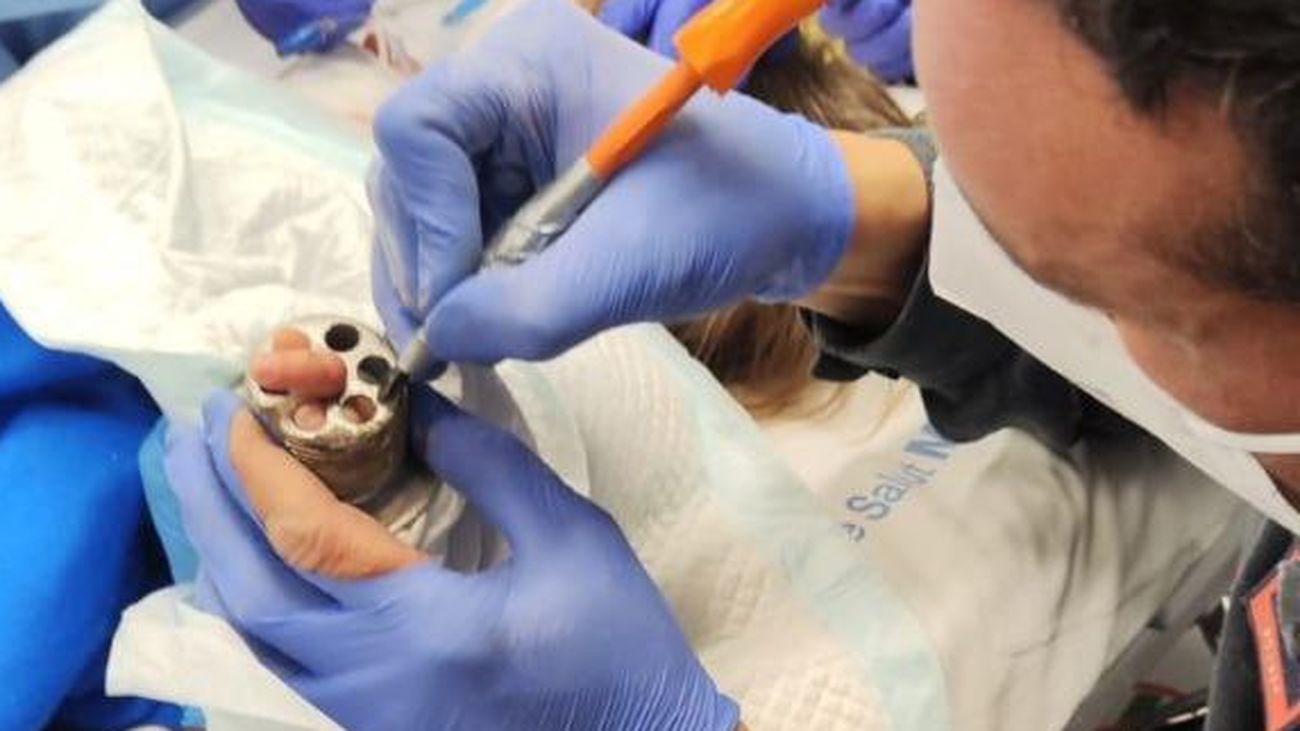Discover a new species of giant mammal that lived with dinosaurs - La Provincia

During the period Triassic (252-201 million years ago), mammal-like reptiles called therapsids with ancestors of dinosaurs, crocodiles, mammals, pterosaurs, turtles, frogs and lizards coexisted. A group of therapsids are the dicynodonts. Researchers from the University of Uppsala, Sweden, together with colleagues in Poland, have discovered fossils of a new genus of gigantic dicydodon: a new species called 'Lisowicia bojani', according to the magazine'Science'
 Comparison of 'Lisowicia bojani' with an elephant and artistic representation. Images: Tomasz Sulej and Grzegorz Niedzwiedzki and Karolina Suchan-Okulska.
Comparison of 'Lisowicia bojani' with an elephant and artistic representation. Images: Tomasz Sulej and Grzegorz Niedzwiedzki and Karolina Suchan-Okulska. The Earth is approximately 4.5 billion years old and has gone through many geological periods and dramatic changes. During the Triassic period, about 252-201 million years ago, all the Earth's lands united and formed the huge continent called Pangea. During this time, the first dinosaurs were born, as well as ancestors of crocodiles, mammals, pterosaurs, turtles, frogs and lizards.
Recently, scientists have been interested in other types of animals, therapsids, reptiles "similar to mammals" that are ancestors of mammals, including humans, that are found today. One group is that of dicyodonts. All species of dicyodonts were herbivores (plant eaters) and their sizes ranged from small digging animals to large explorers.
Most of them were also toothless. They survived the Permian mass extinction and became the dominant terrestrial herbivores in the Middle and Late Triassic. SI thought they had died before the dinosaurs became the dominant form of therapsids in the earth.
However, researchers from the Evolution and Development Research Program at Uppsala University, in collaboration with researchers from the Polish Academy of Sciences (Warsaw), have discovered fossils of a new species of dicyodon in the Polish village of Lisowice. The species was named 'Lisowicia bojani' by the people and a German comparative anatomist named Ludwig Heinrich Bojanus who worked in Vilnius and is known for making several important anatomical discoveries.
The findings show that the Lisowicia was about the size of a modern elephant, about 4.5 meters long, 2.6 meters high and weighed approximately 9 tons, which is 40 percent larger than any dicinodon previously identified. Analysis of the limb bones showed that they had a fast growth, like a mammal or a dinosaur. They lived during the Late Triassic, about 210-205 million years ago, some 10 million years later than the earlier findings of the dicyodonts.
"The discovery of 'Lisowicia' changes our ideas about the latest history of dicyodonts, the Triassic relatives of mammals, and raises many more questions about what really makes dicyodonts and dinosaurs so big," he says. one of the researchers, Dr. Tomasz Sulej, of the Polish Academy of Sciences.
"Dicyodonts were incredibly successful animals in the Middle and Late Triassic, 'Lisowicia' is the youngest dicyodon and the largest non-dinosaur terrestrial tetrapod of the Triassic.It is natural to want to know how the dicynodonts became so big. exciting because clears unknowns in many of our classic ideas of 'Triassic reptiles like mammals'"says Dr. Grzegorz Niedzwiedzki, of the University of Uppsala.
The first finds of Lisowice fossils in Poland were made in 2005 by Robert Borz Cki and Piotr Menducki. Since then, more than 1,000 bones and bone fragments have been collected from the area, including 'Lisowicia' fossils. It is believed that the area has been a fluvial deposit during the Late Triassic period.
Giant dicinodonts with dinosaurs
The discovery of Lisowicia provides the first evidence that there were dicyodonts the size of an elephant similar to a mammal at the same time as the best known dinosaurs sauropodomorfos of long neck, contrary to what was previously believed. Sauropodomorphs include species such as 'Diplodocus' or 'Brachiosaurus'.
This finding fills a gap in the fossil record of dicyodonts and shows that some anatomical features of the extremities that are thought to characterize large mammals or dinosaurs also evolved non-mammalian synapsids. Finally, these discoveries in Poland are the first substantial findings of the Late Triassic dicynodonts in Europe. "The discovery of such an important new species is a unique discovery in life," says Tomasz Sulej.










